(Cross-posted from Twitter, and therefore optimized somewhat for simplicity.)
Recent discussions of AI x-risk in places like Twitter tend to focus on "are you in the Rightthink Tribe, or the Wrongthink Tribe?". Are you a doomer? An accelerationist? An EA? A techno-optimist?
I'm pretty sure these discussions would go way better if the discussion looked less like that. More concrete claims, details, and probabilities; fewer vague slogans and vague expressions of certainty.
As a start, I made this image (also available as a Google Drawing):
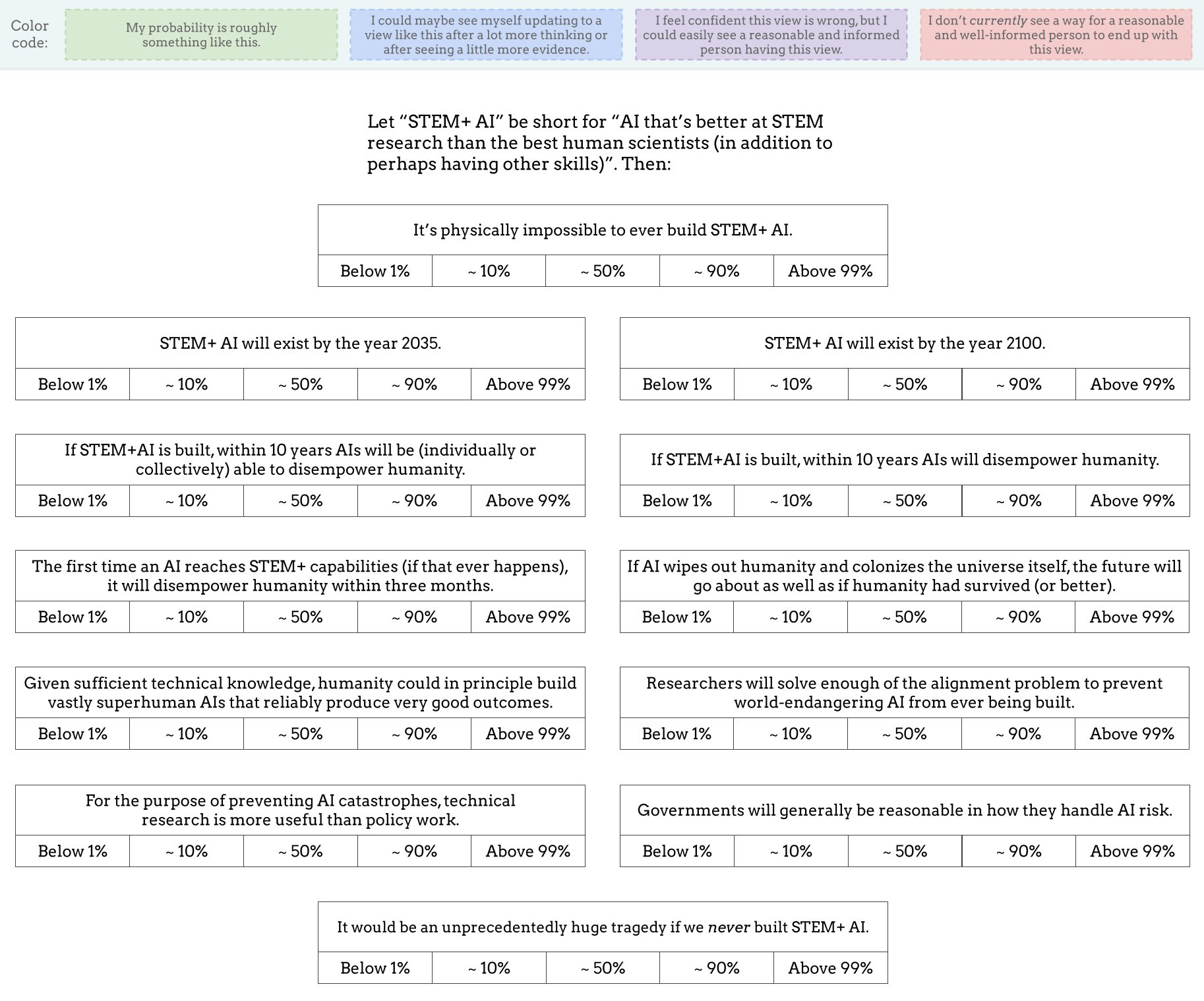
(Added: Web version made by Tetraspace.)
I obviously left out lots of other important and interesting questions, but I think this is OK as a conversation-starter. I've encouraged Twitter regulars to share their own versions of this image, or similar images, as a nucleus for conversation (and a way to directly clarify what people's actual views are, beyond the stereotypes and slogans).
If you want to see a filled-out example, here's mine (though you may not want to look if you prefer to give answers that are less anchored): Google Drawing link.
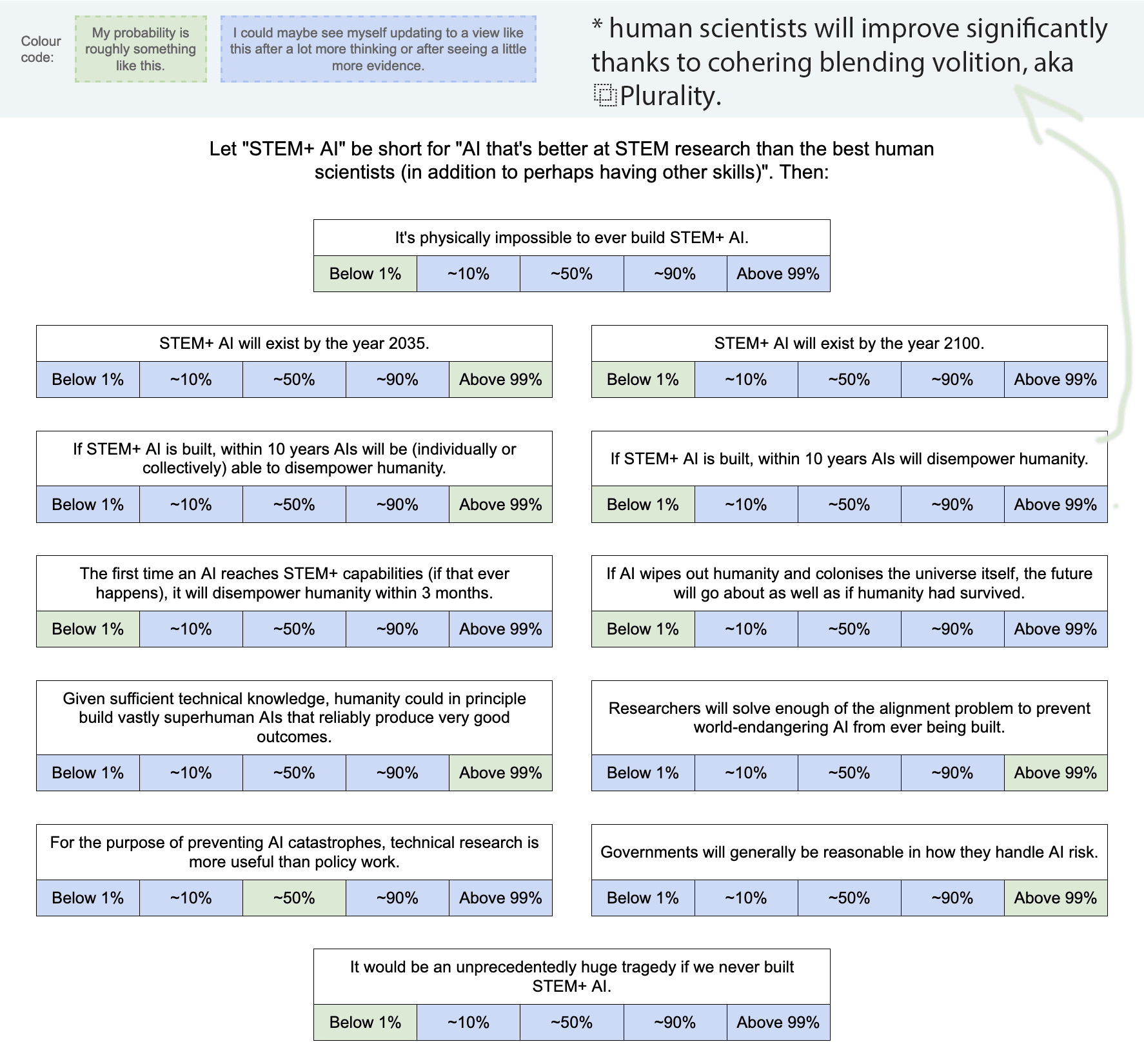
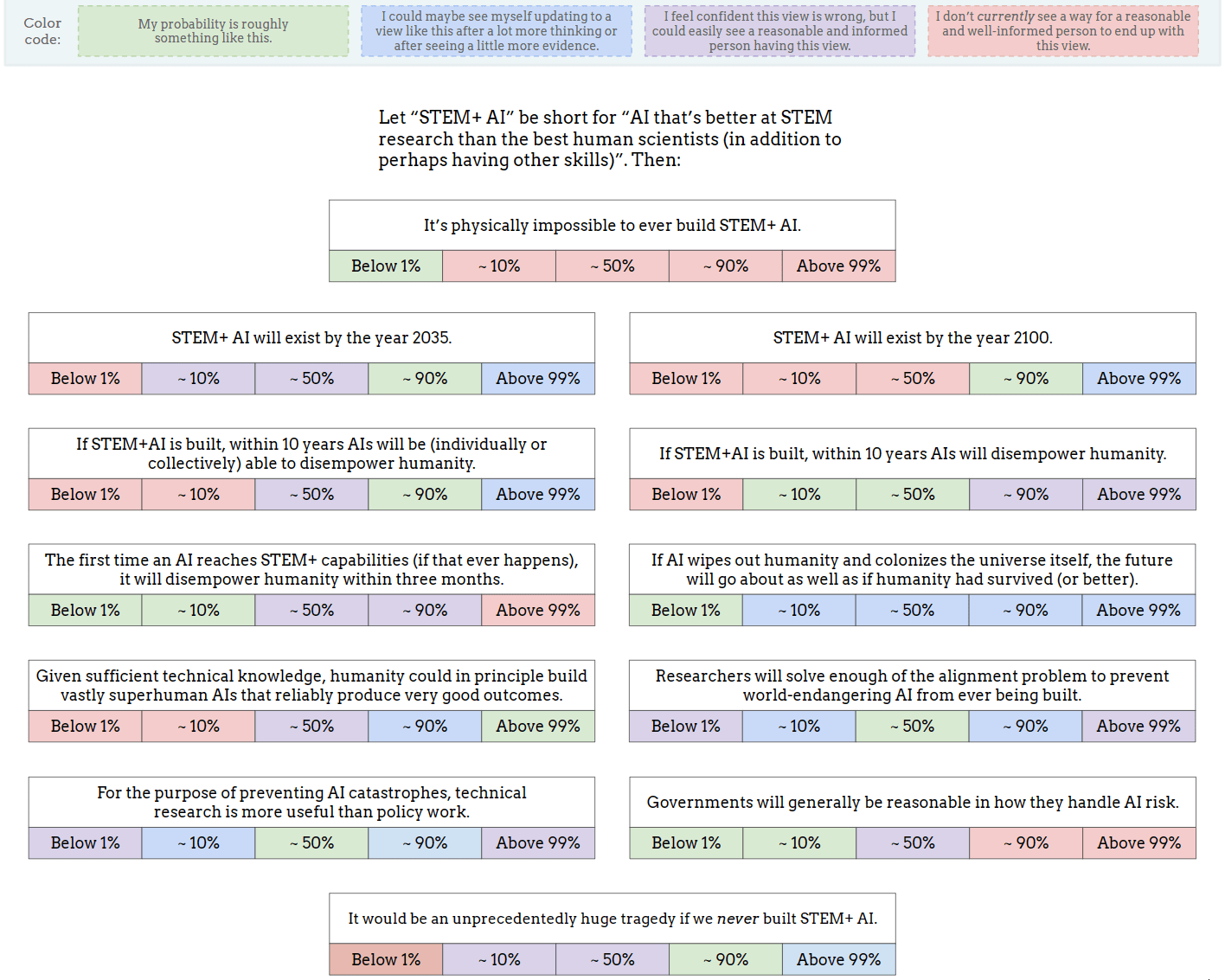
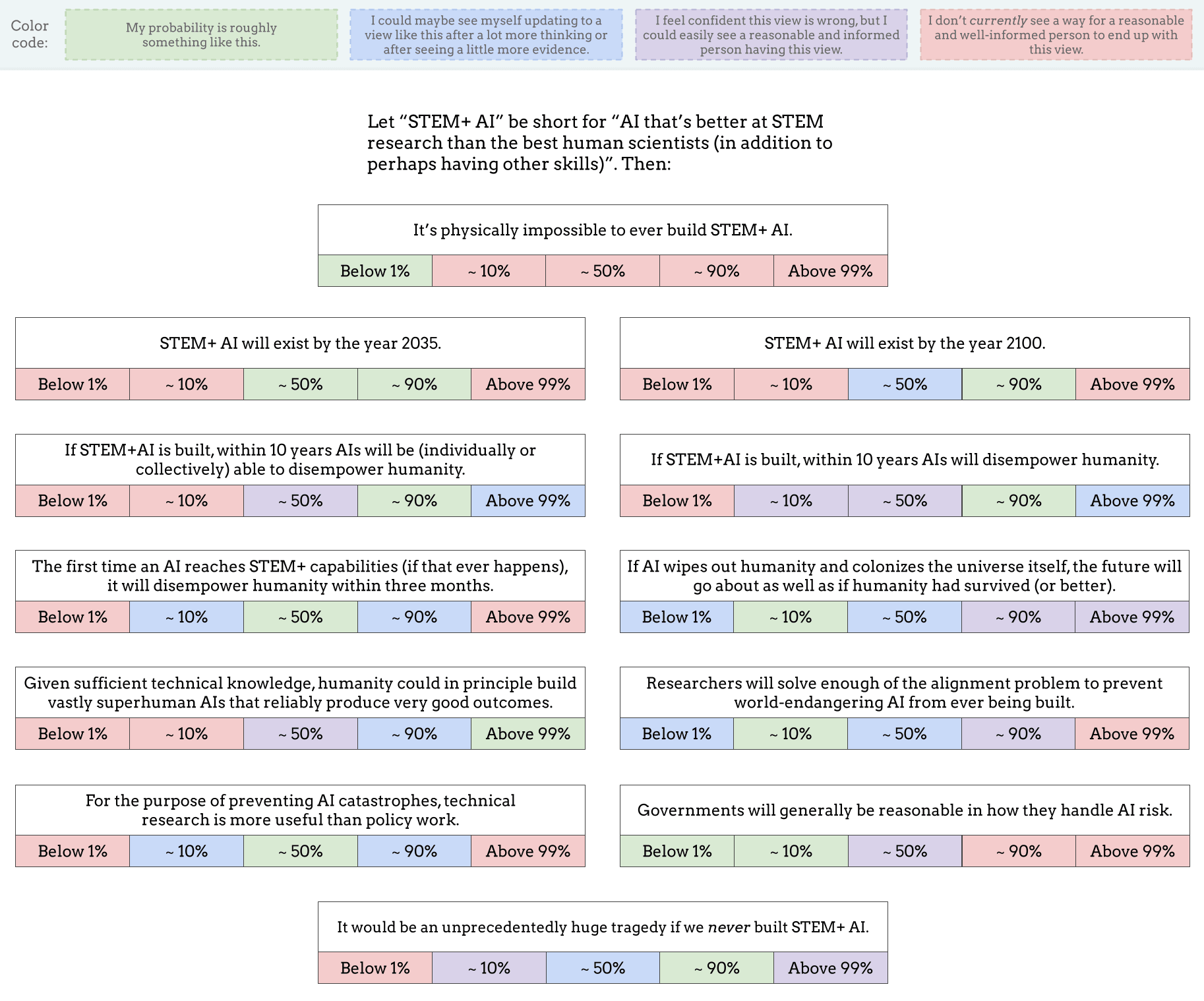
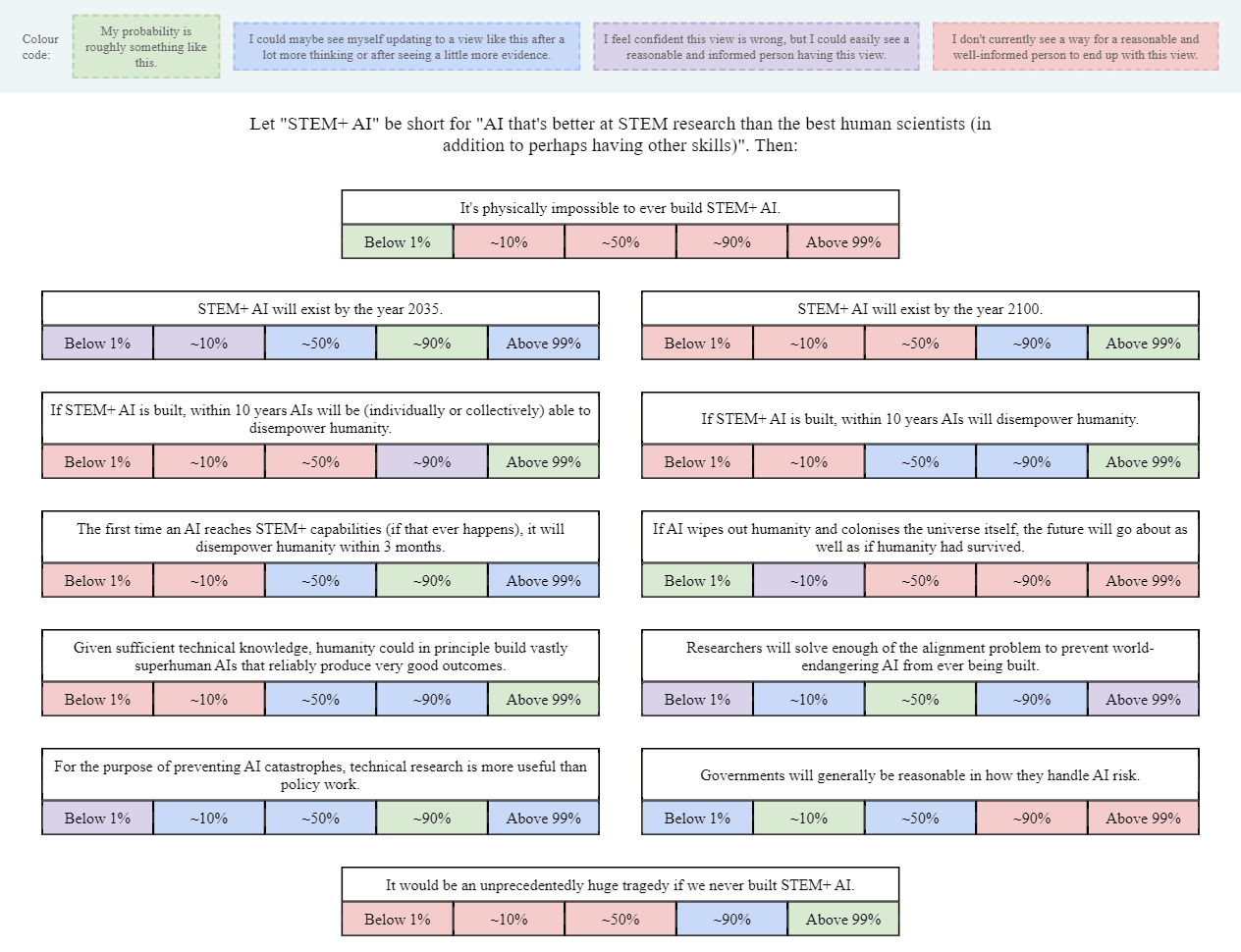
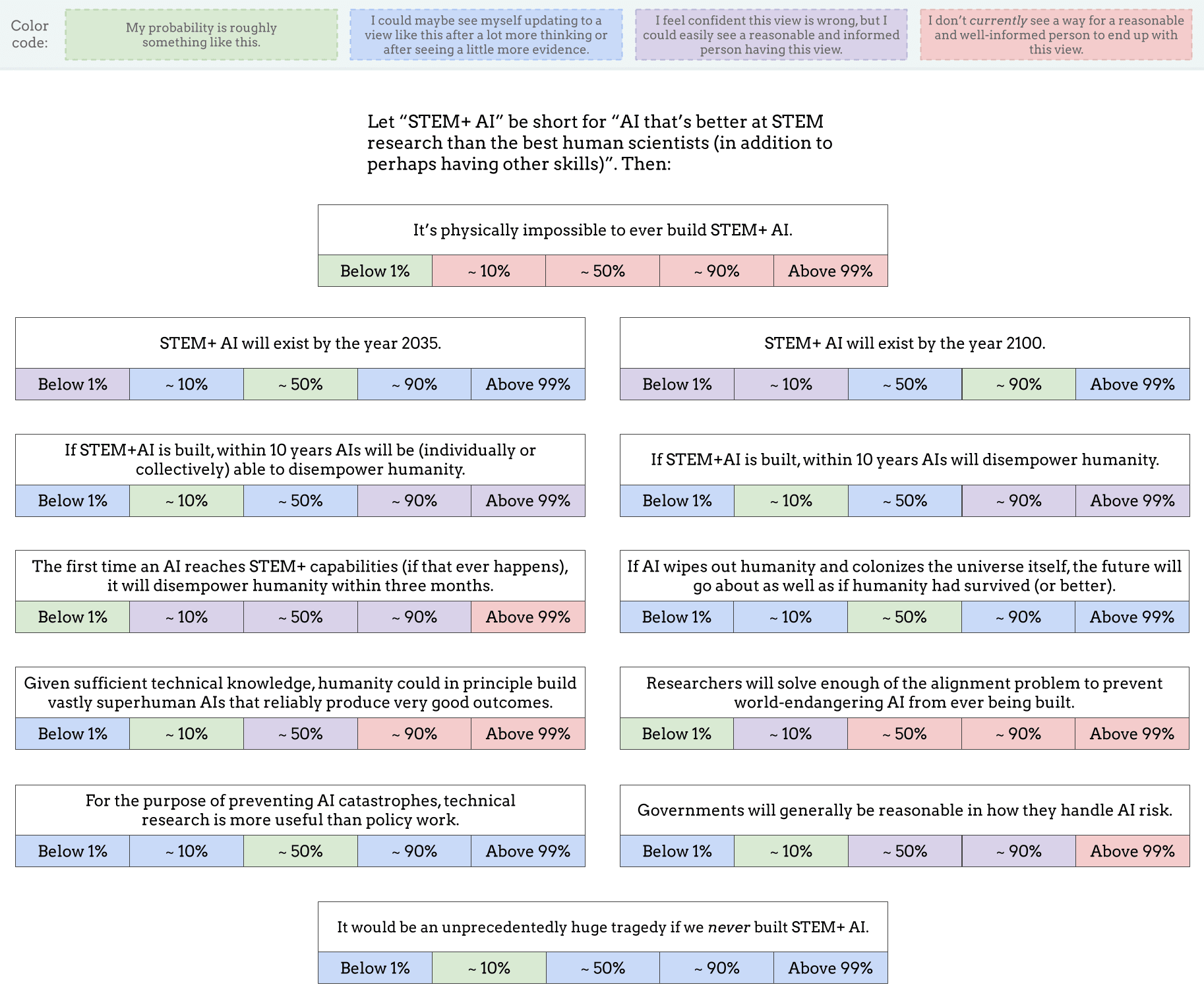
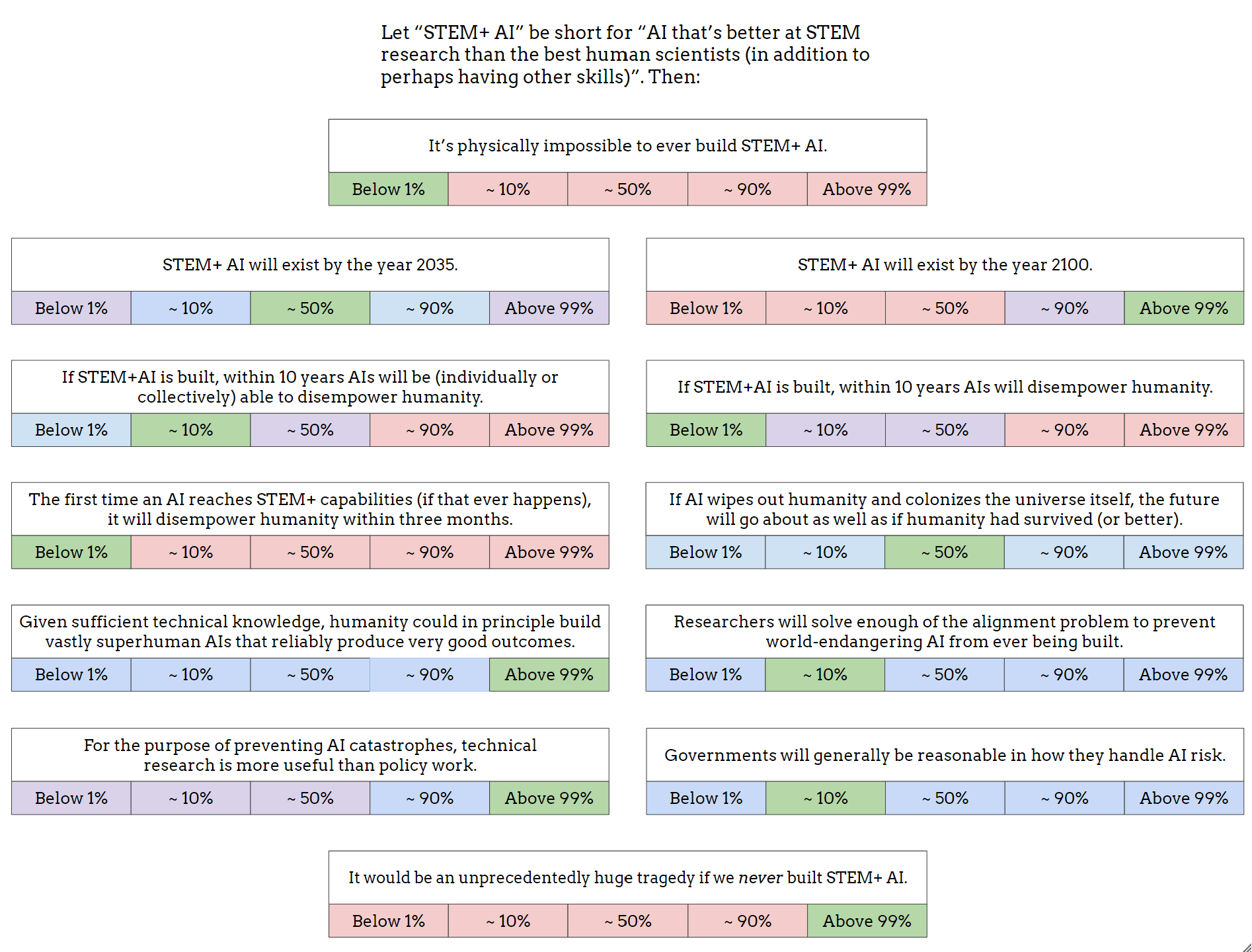

Daniel so you're assuming STEM+ comes with a strong instrumental convergence drive? That is, any machine that is STEM+, by definition, aces some benchmark of "STEM" tasks better than humans by enough margin to say it's not chance.
And so you're also assuming that you can't achieve that without constructing the AI in such a way that it exhibits power seeking behavior and is always running and trying to accomplish some goal? And obviously disempowering humans is an intermediate step along the route to achieving that goal and it's convergent independent of the goal.
Or you think humans will do that because such a machine is more useful to humans? (is it? It's always trying to increase it's own power, won't that get expensive and worrisome to humans? GPT-nT editions are what humans want, right, and those models likely have slightly worse generality for much lower inference costs.)